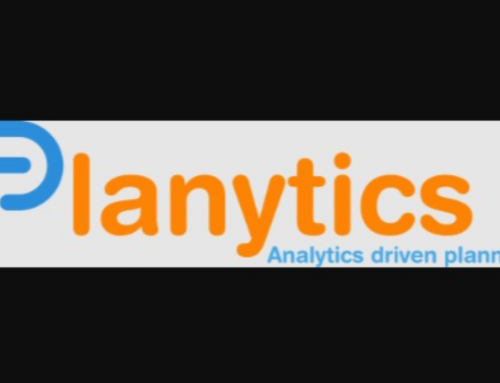Business technology is evolving rapidly and the quest for cutting-edge solutions that can revolutionize the way companies operate has been intense. This blog delves into the innovative journey behind CXAIR, a platform that integrates AI and modern technologies to transform the B2B demand and lead generation analytics and reporting for campaign management and display advertisement.
Table of Contents
The Challenges………………………………………………………………………………………………………..2 Unpacking Demand Generation ………………………………………………………………………………..2 Unpacking B2B Data Conundrum………………………………………………………………………………2 A Case for Data Enrichment in B2B Demand Generation ………………………………………………..3 The CXAIR Solution ……………………………………………………………………………………………………….5 What is CXAIR? ……………………………………………………………………………………………………..5 Leveraging AI to Transform Decision-Making ………………………………………………………………..5 Data Storytelling Way of Reporting …………………………………………………………………………….7 Challenges Along the Way ……………………………………………………………………………………….7 Key Principles for Implementing Gen AI……………………………………………………………………………8 Conclusion ………………………………………………………………………………………………………………….8
1
The Challenges
Unpacking Demand Generation
There are a few million companies and tens of millions of professionals who represent potential target audience for organization’s offerings. These offerings come in many forms – products, services, solutions, technology platforms, or business accelerators – and the marketing activities at the top of the funnel usually include creating content and distributing it to this likely audience.
Before a campaign or advertisement is executed, there are several challenges to address: What is the right marketing content, which companies have the ideal audience, and what type of professional are likely to engage with it? Then, a new set of questions arises during or after the campaign: Did it perform well (or is it performing well), did we reach the right audience, is there sufficient market traction for our topic, and which types of companies responded best?
The first phase is the planning phase which is important but will be discussed in part two of the blog. For now, let’s focus on the second phase of the demand generation process, where leads and campaign analytics take center stage.
Imagine reaching out to several professional marketing service organizations for campaign execution. All of them appear to offer the same data, company and audience profiles, and analytics that simply report what happened. But is that enough? The real question is whether there’s a way to discover data patterns and entity relationships that yield deeper, actionable insights, and recommendations – ultimately shaping current and future campaigns.
Traditional analytics and reporting lacks depth, insights, and actionability that customers are looking for.
Unpacking B2B Data Conundrum
We often look to technology for answers to tough questions, forgetting that data lies at the heart of every solution. No matter how advanced the technology, it can’t compensate for insufficient or poor-quality data.
Demand generation systems have long struggled with real-time data processing and decision-making. They typically rely on basic demographics and firmographics -limited data
2
sets that hinder timely, informed decisions and stall the strategic pivots needed to boost campaign effectiveness. While technology can resolve many data challenges, the key is to reframe the problem by prioritizing data enrichment first instead of attempting to generate insights immediately.
Campaigns often need more nuanced data to target specific personas rather than generic demographics. Advertisers define Ideal Customer Profiles (ICP) with attributes like location, revenue, industry, and job titles – producing broad set of requirements. There are not many ways to create segmentation using these generic attributes to target precisely. No wonder that makes many marketing service providers seem to produce similar targets and performance metrics. To truly optimize performance, we need enriched data that digs deeper than the basic attributes given above. In the absence of it, institutional knowledge takes over (represented in Figure 1 below).
Offering Tacit Knowledge Target Audience
Figure 1: Institutional (Tacit) Knowledge for Analysis and Reporting
AI and machine learning has introduced potential solutions to these challenges, yet the practical implementation often falls short due to costs, complexity, and concerns over data accuracy and security.
But once the data story is right, we can tackle the remaining technology challenges and achieve the deeper insights and recommendations we all need and deserve.
A Case for Data Enrichment in B2B Demand Generation
How do we enrich data when we have so little to begin with?
In general, there are two practical ways to develop solutions for complex problems. First, look at a similar challenge that’s already been solved in another domain; if that doesn’t directly apply, borrow the relevant techniques and craft a new approach. This is essentially Machine Learning 101- nothing groundbreaking there.
3
In our context, the domain that most closely resembles B2B marketing is B2C marketing, which also asks, ‘Who is your target audience?’ But the similarities end there.
B2C is far more mature, having embraced technology early and benefited from extensive research driven by eCommerce. B2B data, on the other hand, often lacks the volume due to siloed data, and has less research depth that is needed to adopt many of these same machine learning methods. B2B, purchase decisions are guided by complex business requirements and driven by buying committees rather than individuals. Meanwhile, B2C typically deals with high-volume, low-value transactions involving simpler needs or emotional factors. Traditional eCommerce solutions rarely account for B2B’s unique dynamics, which is why they fall short.
Clearly, a different line of thinking is needed here to enrich B2B data.
The primary ingredient for B2B data enrichment comes from content, which is often text based but increasingly includes voice and video. Think white papers, blogs, case studies, product data sheets, demos, webinars, and podcasts. By analyzing this content in greater depth, we could uncover insights that help match it to the right audience.
Offering Target Audience Content
Persona
Insights
Insights
Figure 2: Enrich B2B Data with AI for Advanced Analytics and Reporting
However, that’s only part of the equation as shown in Figure 2. On the other side, we need a deeper understanding of the business professional as a persona – beyond just job titles or department functions. Imagine persona as a set of attributes that describes the professional in a way relevant to the B2B activities. It’s not just a single tag like job title.
Together, these insights not only allow us to analyze campaign performance and generate rich analytics, but also enable us to steer or design campaigns that optimize reach.
4
The CXAIR Solution
What is CXAIR?
‘CX’ here refers to the customer experience side of marketing services organizations like DemandScience. It can also apply to any organization’s marketing functions that interact with business clients frequently. It covers the teams that interact directly with customers, ensuring a positive experience and success in demand generation. This interaction often involves answering a wide range of questions about content, display advertising, campaign performance, or leads generated.
‘AIR’ cleverly stands for Analytics, Insights, and Recommendations – or AI Reporting.
We created CXAIR because existing platforms often provide only surface-level insights, leaving companies hungry for deeper, actionable intelligence. Customer success teams can spend hours researching and answering a variety of client questions, from basic performance summaries to detailed recommendations. Examples include:
• A simple query like “cross-reference data points and summarize the campaign,” • An actionable request such as “create a plan to reach out to companies similar to our top responders,”
• Or a research-oriented question like “determine the campaign’s topic and list companies showing intent around these topics.”
Leveraging AI to Transform Decision-Making
CXAIR is an innovative platform that stands out by integrating robust AI capabilities with large language models (LLMs) and traditional data analytics techniques. Our approach uses technology, AI, and Generative AI to create data that’s connected, contextual, and continually updated as shown in Figure 3. By integrating multiple data sources and applying machine learning and generative AI, we deliver enriched insights that drive better decision
making process and more effective campaigns.
The platform consists of multiple components that work synergistically to enhance campaign data, provide real-time responses, and produce in-depth reports that are not only insightful but also operationally actionable. Let’s go through the important ones.
5
Data Enrichment and Integration: CXAIR employs sophisticated AI techniques to enrich core campaign data with detailed metadata that includes industry classifications, buyer intent, and detailed persona insights. CXAIR adds incremental value to data in stages that transforms core data into information, and finally into knowledge.
Figure 3: Incremental Data Value with CXAIR
• Core Data: Through data integration, proprietary and partner data are combined to establish a core foundational data. This includes data from target account list, campaign execution systems, display advertisement logs, intent data, and others.
• Information: Specialized B2B models are applied to enrich data and is layered with Generative AI to add deeper context to the data and to handle metadata. For example, campaign assets are used to discover target topics, companies, industries and verticals. Target audience data is used to generate a rich B2B persona with several attributes that can be applied to wider audience and segmentation.
• Knowledge: Using LLM and RAG (Retrieve-Augment-Generate) architecture, detailed analytics, insights and recommendations are produced.
Dynamic Query Handling: The platform uses straightforward coding techniques to explore enriched data and external databases in real time. This approach empowers CXAIR to dynamically retrieve and deliver the information that marketers need. Natural language questions are translated into database queries, which collect and aggregate raw data before passing it on to downstream components for further context.
Intelligent Reporting: This layer uses generative AI to its full potential. The raw data from dynamic queries, combined with the user’s question, passes through the RAG (retrieve– augment–generate) architecture to build additional context. CXAIR applies straightforward
6
but effective techniques—function calls, tools, and reflection strategies—to contextualize data and generate responses with LLMs. Necessary guardrails ensure each response is accurate and aligned with the tone, language, and length required by the customer success team to answer client questions clearly.
Data Storytelling Way of Reporting
CXAIR Reporting Studio brings all platform components together to showcase innovation in a fresh way. The process is simple and intuitive:
1. Ask a question about your campaign performance in natural language. 2. Convert the question into queries that fetch enriched data containing the answers. 3. Send the data through the Generative AI and RAG (retrieve–augment–generate) pipeline to add in-depth context.
4. Apply guardrails to ensure the response is accurate and aligned with your requirements.
Finally, the response is transformed into a slide with rich visuals – charts, tables, and narratives. Users build their reports one slide at a time, answering even the most complex questions in seconds. The completed report can then be downloaded as a PowerPoint (.ppt) or .pdf file.
Challenges Along the Way
While the path to innovation was evident, it wasn’t without obstacles. Deploying AI at the scope and complexity required for CXAIR introduced distinct challenges:
• Scalability and Cost: Large language models demanded significant resources, driving up expenses and requiring inventive approaches to maintain performance at scale beyond the POC stage.
• Data Security: Handling sensitive corporate data mandated robust security protocols and strict compliance with data protection regulations.
• Accuracy and Reliability: Providing trustworthy insights was crucial, especially to avoid the risk of generating incorrect or misleading information.
7
Key Principles for Implementing Gen AI
The following principles guide the use of generative AI in enterprise-level software products and addresses the challenges. They were developed through multiple iterations and experiments. But first, it is assumed that the team has already determined that using LLMs is both relevant and valuable for the specific use case. Once that’s established, we recommend to:
1. Use simple program routines and software engineering for straightforward data manipulation.
2. Rely on traditional machine learning for tasks requiring deterministic, consistent, scalable, and cost-effective outputs.
3. Leverage generative AI for planning and creative tasks, where it can analyze data subsets and produce concise summaries. A finer nuance would be to ignore the hype around AI agents initially but explore tools, function calls, guardrails and simpler techniques.
4. Adopt a hybrid system that combines solid software engineering, traditional ML models, and generative AI to achieve the best overall performance.
Conclusion
The Real-world Impact of CXAIR
CXAIR’s impact goes beyond technical metrics, delivering real business value and strategic insights. By making faster, data-driven decisions that align with strategic goals, businesses can boost customer satisfaction and drive growth.
Looking ahead, CXAIR’s evolution will include enhanced B2B and predictive models, new tools, and possibly an agent-based framework. The focus remains on refining accuracy and broadening capabilities to serve more diverse markets and industries, potentially transforming B2B marketing technology on a global scale.
Connect with DemandScience to discover how we can elevate your marketing strategies with CXAIR.







